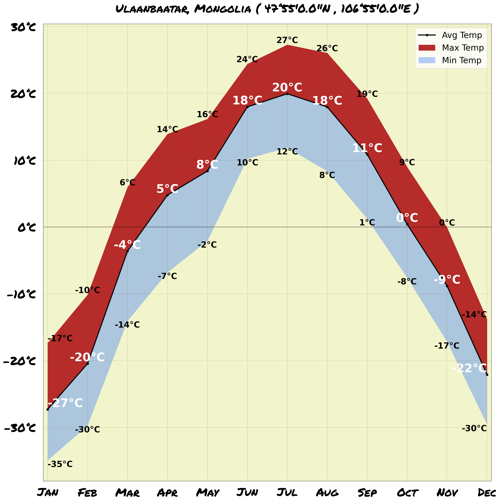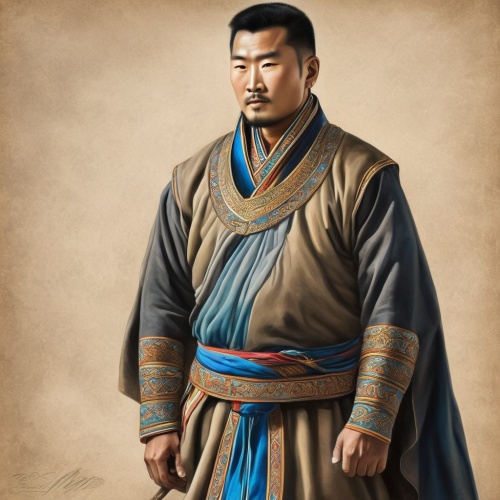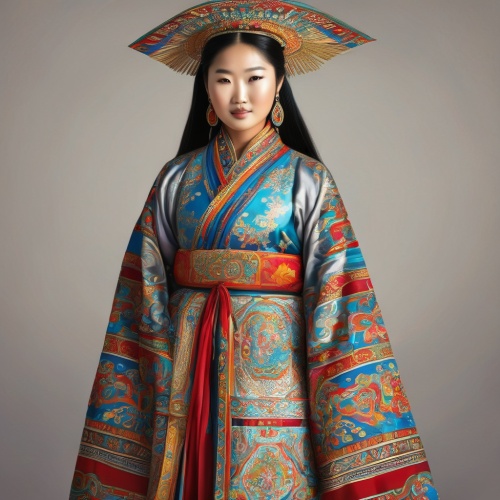Understand
Discover the captivating history of Mongolia through its fascinating capital city, Ulaanbaatar. This modern metropolis has a rich and storied past, with several well-known cities serving as past capital cities. However, it wasn't until the 16th century, with the introduction of Lamaism and the emergence of permanent monastic establishments, that a true capital city emerged. The founding date of Ulaanbaatar, also known as Ikh Khuree, is marked in Mongolian history as the year 1649. This pivotal year saw the establishment of the residency palace of Mongolia's first spiritual leader, Zanabazar or Jebtsundamba Khutuktu. The city's name, meaning "large circle," reflects its circular shape and the sense of unity that it represents. As Ulaanbaatar grew and evolved, it changed locations over 20 times before settling in its current location in the year 1778. Today, the city showcases a captivating mix of architectural styles, showcasing influences from Russian architecture, Buddhist monasteries, and modern high-rises. Explore the bustling streets, where Soviet-era buildings stand alongside traditional ger settlements, creating a unique and vibrant atmosphere. While in Ulaanbaatar, be sure to visit the notable Buddhist temples that dot the cityscape. The Gandan Tegchinlen Monastery, Choijin Lama Temple, and Bogd Khan Winter Palace Museum offer a glimpse into Mongolia's deep spiritual heritage. Experience the rich tapestry of Ulaanbaatar, where ancient traditions blend seamlessly with modern life, creating a city that is as diverse as it is captivating. Embark on a journey through time and discover the wonders that await in this fascinating capital city of Mongolia.
Map & Climate
Popular Foods
 The first most popular food in Mongolia is Buuz, which are delicious dumplings filled with meat, typically mutton or beef, and seasoned with salt, pepper, and onions. They can be steamed or boiled and often served with sour cream or chili sauce.
The first most popular food in Mongolia is Buuz, which are delicious dumplings filled with meat, typically mutton or beef, and seasoned with salt, pepper, and onions. They can be steamed or boiled and often served with sour cream or chili sauce. The second most popular food in Mongolia is Tsuivan, a stir-fried noodle dish that combines wheat or egg noodles with an assortment of vegetables like cabbage, carrots, and bell peppers, along with a choice of meat such as beef, chicken, or pork. It is typically seasoned with soy sauce, garlic, and other spices, making it a flavorful and hearty meal.
The second most popular food in Mongolia is Tsuivan, a stir-fried noodle dish that combines wheat or egg noodles with an assortment of vegetables like cabbage, carrots, and bell peppers, along with a choice of meat such as beef, chicken, or pork. It is typically seasoned with soy sauce, garlic, and other spices, making it a flavorful and hearty meal. The third most popular food in Mongolia is Khorkhog, a traditional nomadic meal consisting of mutton or beef, potatoes, onions, and various other ingredients, cooked together in a large steam-filled pot. The stew is typically seasoned with garlic, salt, and other spices, resulting in a rich and satisfying dish.
The third most popular food in Mongolia is Khorkhog, a traditional nomadic meal consisting of mutton or beef, potatoes, onions, and various other ingredients, cooked together in a large steam-filled pot. The stew is typically seasoned with garlic, salt, and other spices, resulting in a rich and satisfying dish.




Comments
NO COMMENTS